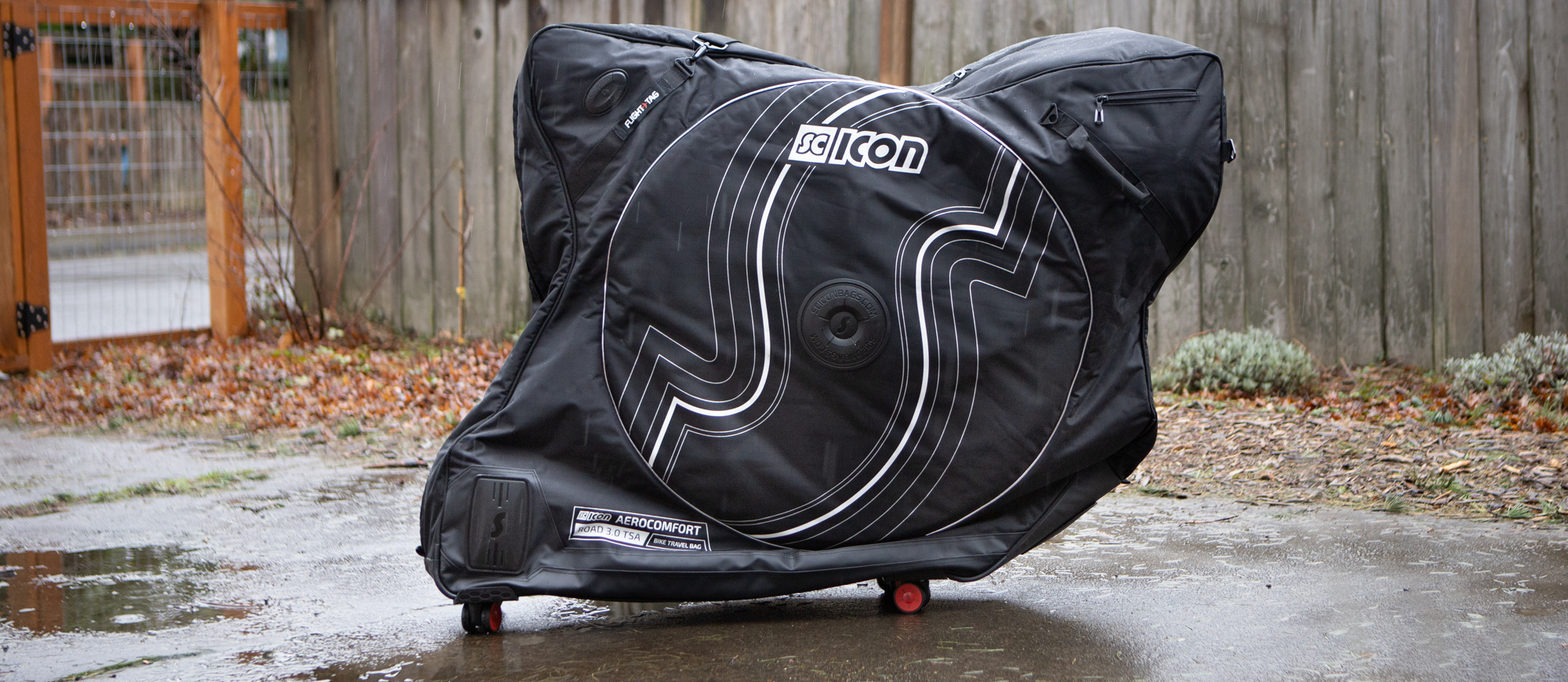Cyclingnews Verdict
It seems prudent to take the rear derailleur off if you have thru-axles, but otherwise, you really don’t need to disassemble the bike and I’ve seen it survive countless trips with no issues. Just keep an eye on what your ground transportation options are and flared gravel bars aren’t ideal.
Pros
- +
No disassembly required
- +
Instructions are printed on the bag
- +
Accessories bag stays attached to limit movement
- +
Options for shouldering it if needed
- +
Incredibly smooth wheels
- +
Stores easily
Cons
- -
Metal derailleur cage isn’t useable with a thru axle
- -
Large overall size, so difficult to fit in cars or on trains
You can trust Cyclingnews
I'm writing this review in the middle of winter. It's cold, it's wet, it's grey, and it's generally rather miserable. There's nothing I'd rather do than get outside on my bike in decent weather. Unfortunately, if I want to do that, the only option is going to involve an aeroplane. Flying with a bike isn't that big of a deal provided you've got a quality case, but as always, the question is which one?
To help find the right protection for your bike on an aeroplane, we've got an expansive list of the best bike travel cases. In that list, there are hardshell options and softshell options and one thing you might notice is that many of the cases require disassembly. If that doesn't sound like your idea of a good time, there are a few that promise to keep your bike almost entirely assembled and fully intact. One of those is the Scicon Aerocomfort 3.0 road bike travel bag, which like its closest competitor, the Evoc Road Bike Bag Pro, only asks that you remove your wheels and pedals.
The Scicon Aerocomfort 3.0 road bike travel bag promises easy protection without disassembly and it’s popular. I gave it a try after getting a tip from someone who travels with bikes regularly but that wasn't the first or only time I saw it. If I find myself with a group of cyclists who flew somewhere, there's usually more than one person using it. Given the suggestion and popularity, it was time for me to give it a proper try. If you like the idea of travelling without taking your bike apart, keep reading to see what's good, and what's not about the Scicon Aerocomfort 3.0 road bike travel bag.
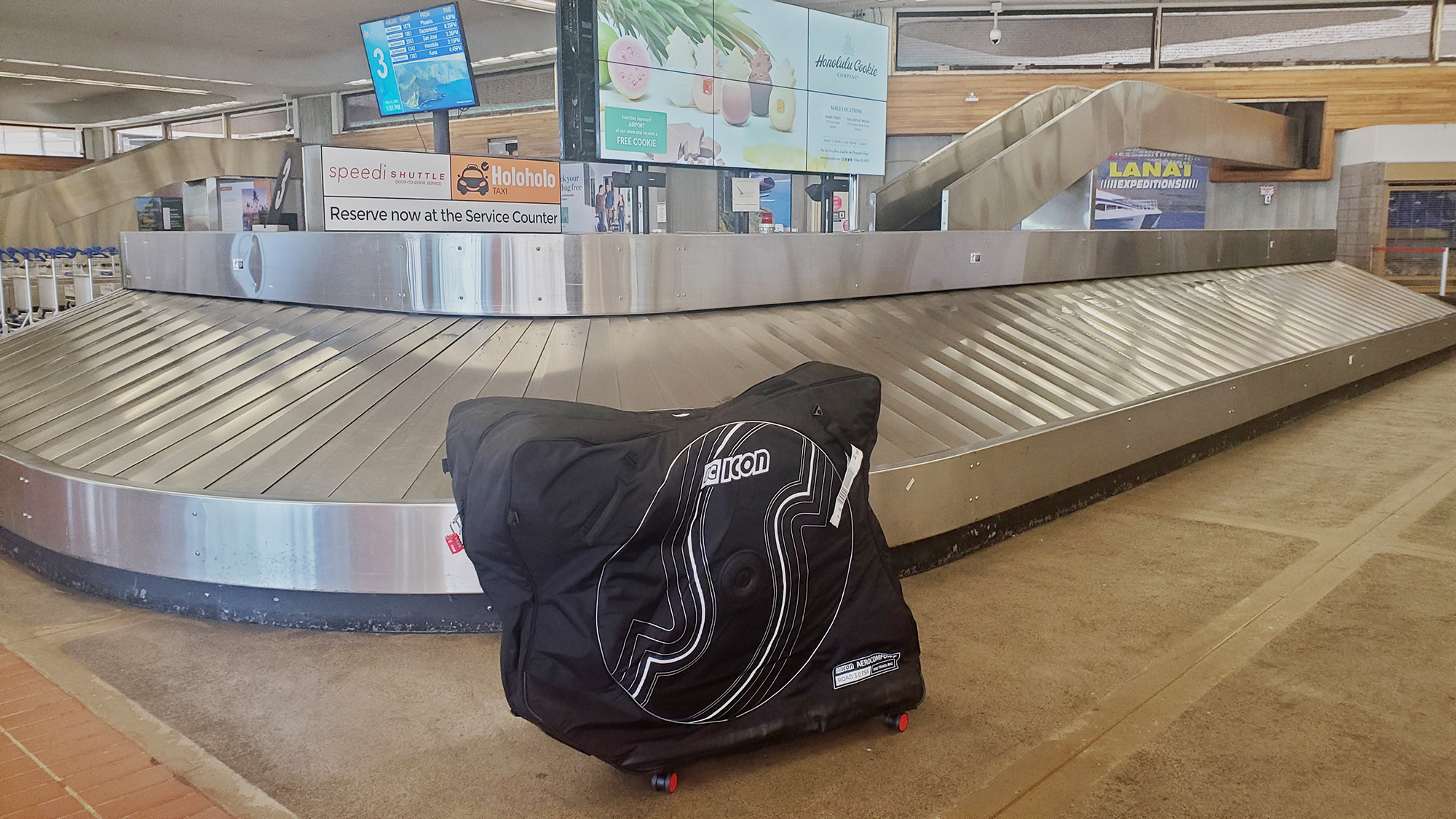
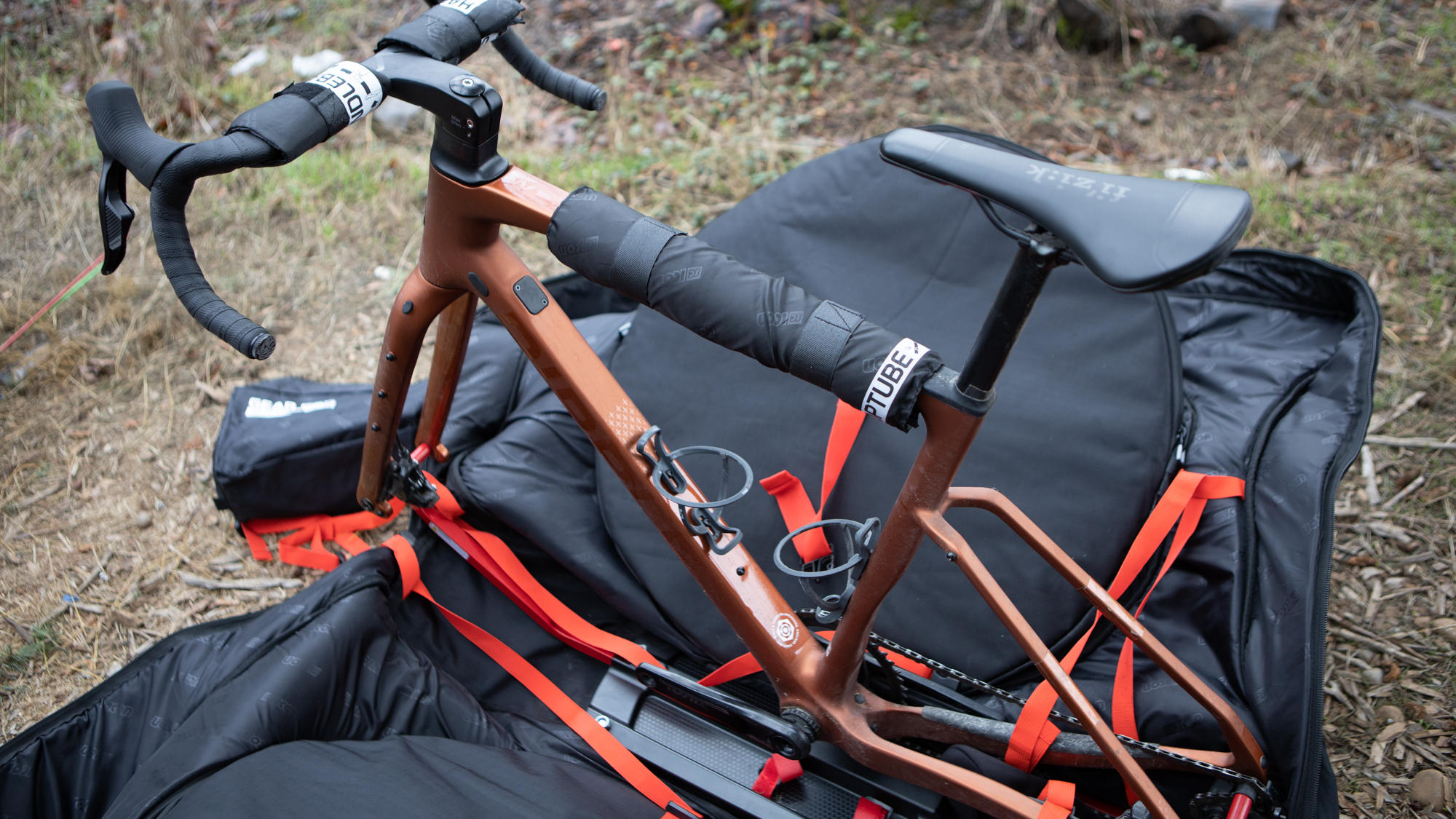

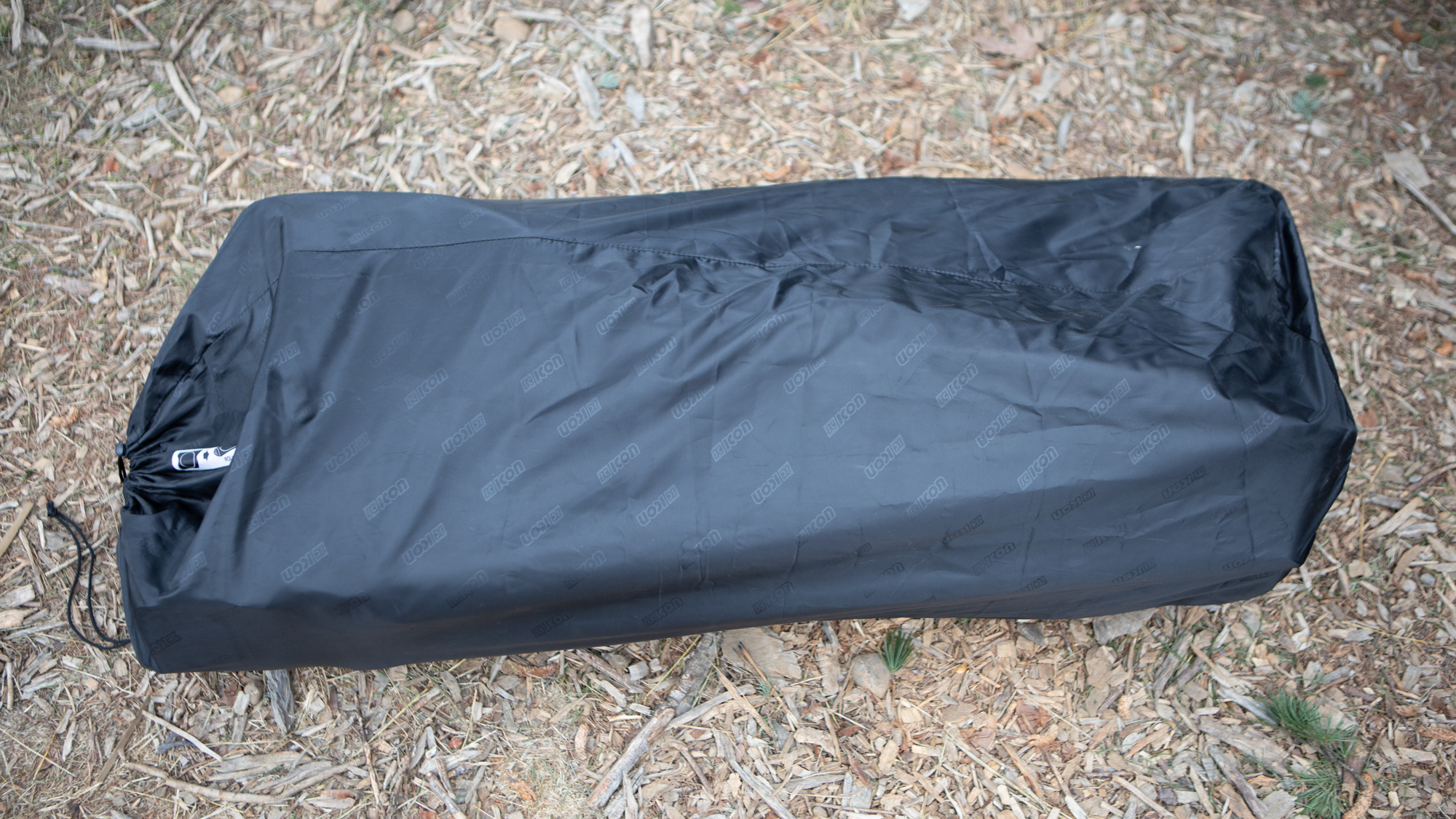
Design and aesthetics
The backbone of the Scicon Aerocomfort 3.0 road bike travel bag is the base of the bag. From the outside, you'll notice there are rigid plastic pieces at the front and back. These plates sit under the four wheels that rotate 360 degrees. They also cap off the edges of a rectangular section that makes up the base. Like the rest of the Scicon bag, it's soft with dense padding and covered in an extra-durable vinyl outer.
The real structure of the design is on the inside though. Taking care of your bike is a pair of square metal tubes that sit a little wider than the widest part of your cranks. This little frame is what protects your bike and provides stability for the rest of the bag. At the rear, the two bars connect into a thick and rigid bit of plastic that arches upward before ending in with a receiver. In the accessories provided, there are two pieces of metal in the shape of a T. One fits a quick release and the other a thru-axle. Both attach to the base with a screw and they both have a bit of rubber where the chain sits once you've removed the wheel.

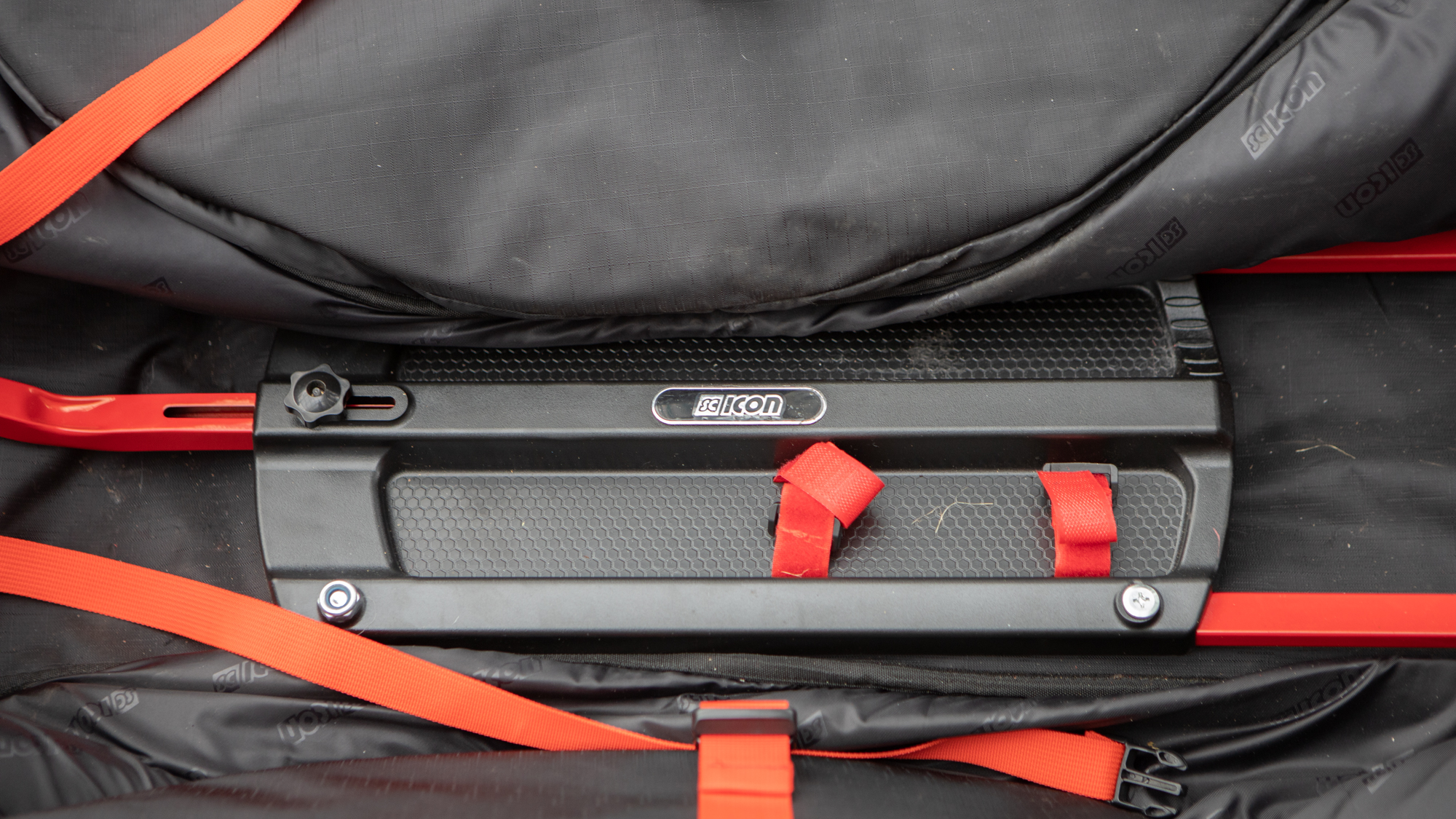
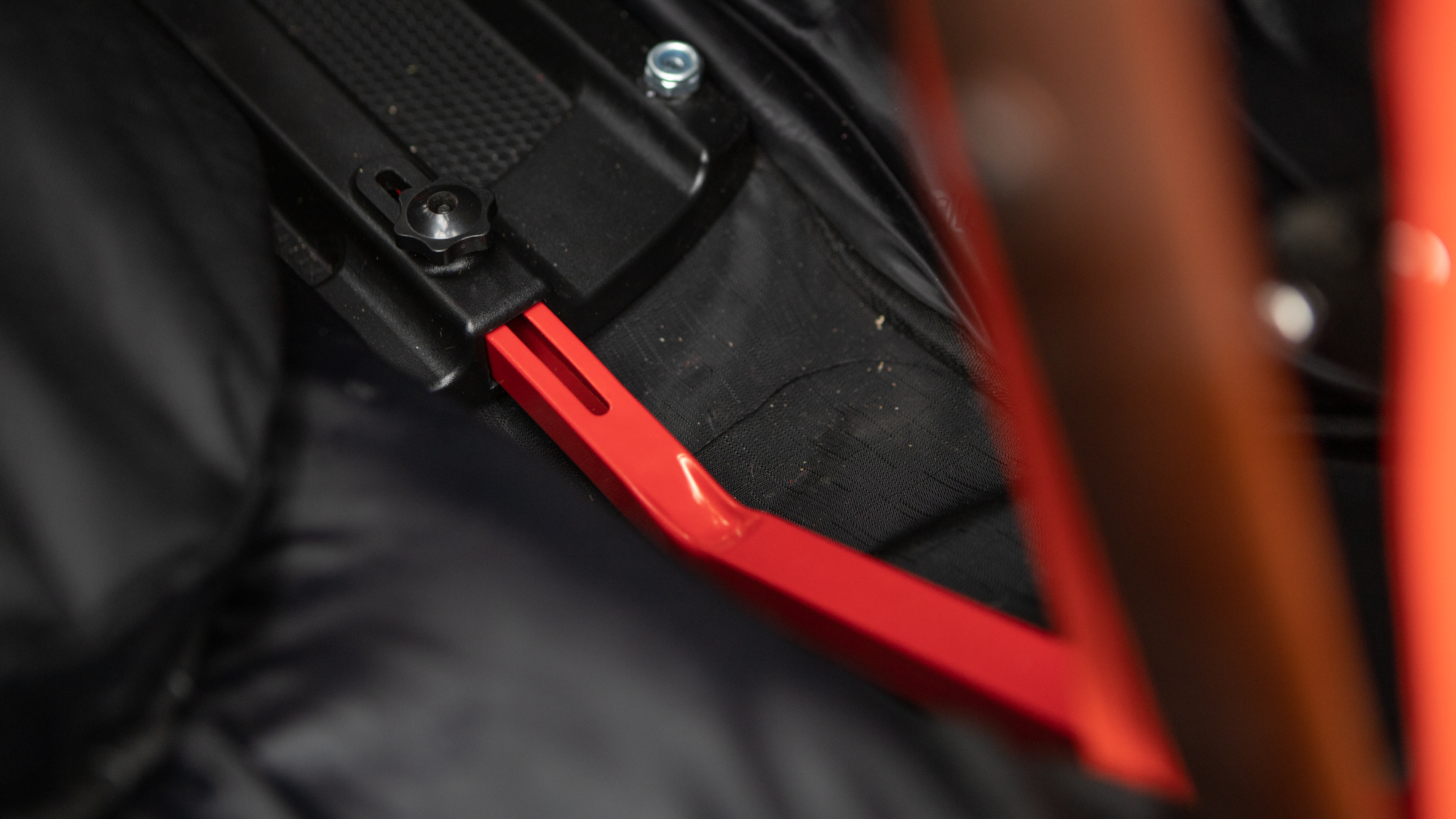


At the other end of the metal bars, you'll find more of the same plastic. This time it's at the base and there is a central spine where you can balance the centre of the frame under the bottom bracket white packing. The design of this piece makes it look like a good place to rest tools but, with no tools needed, that isn’t likely to see a lot of use. When the bike is fully attached to the frame of the bag, the bottom bracket shell doesn’t touch the base at all.
At the front of the spine is another receiver hole for your front axle. This time there is another length of square metal bar. Once you slide the bar into the plastic, you can move it fore and aft to match the wheelbase of your bike before tightening it down.
With your bike locked down into the frame at the bottom, that's the end of the hard part. From there you employ a series of straps and pads to hold the bike tightly against the bottom frame and keep it from moving around. The wheels go on either side to help provide structure to the upper part of the bag but the design uses a heavy nylon outer with dense padding around 13mm thick to also protect the bike from impacts. At the front, there's an extra strip of padding that you can move so that it sits over each of your drop bar controls. There's also a spot of hard plastic over where the derailleur sits as well as in the centre of each wheel. What's more, there is a metal cage that provides protection for the derailleur, howver it only attaches with a quick release so those with thru-axles won't be able to take advantage of this feature.
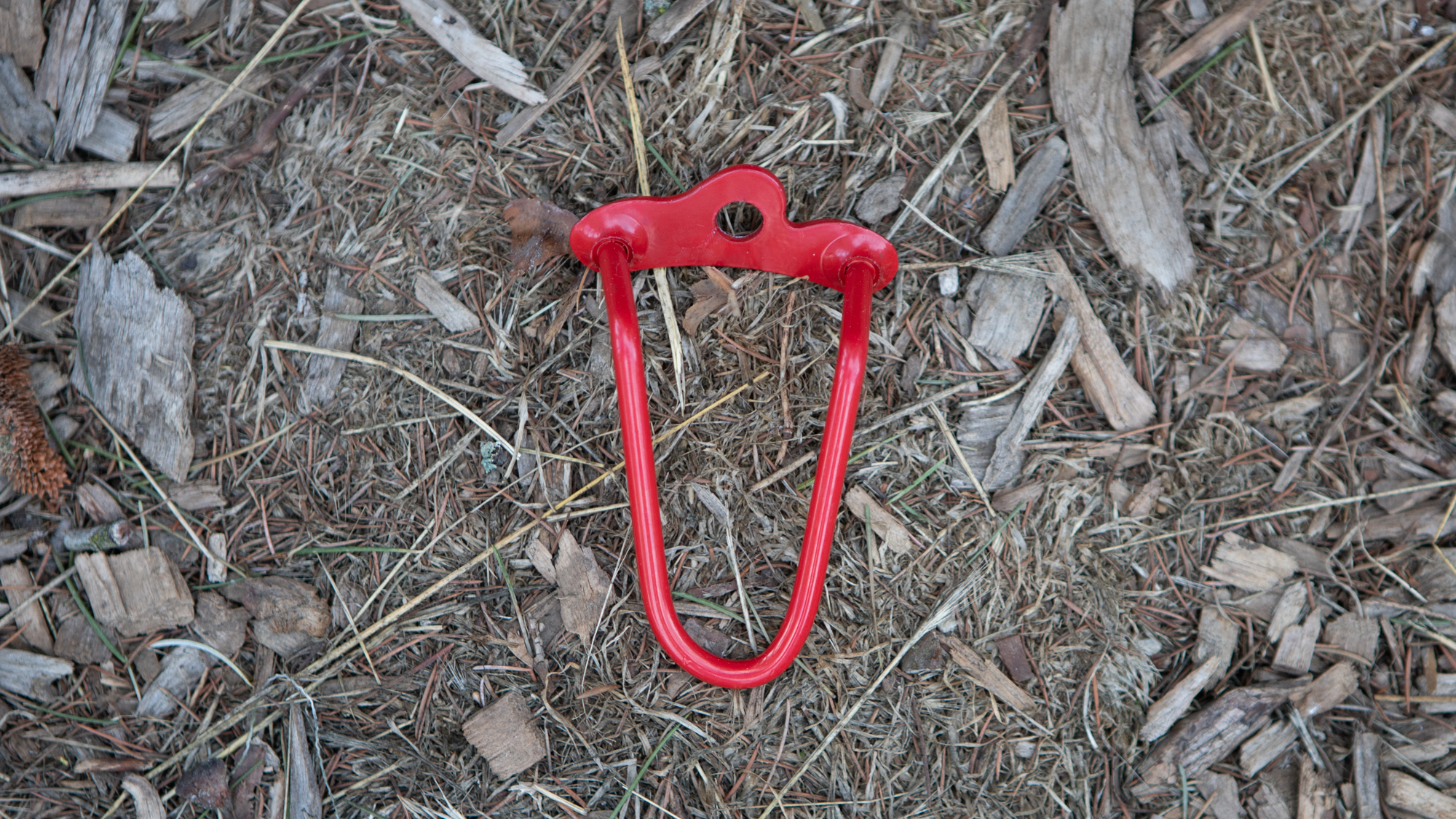
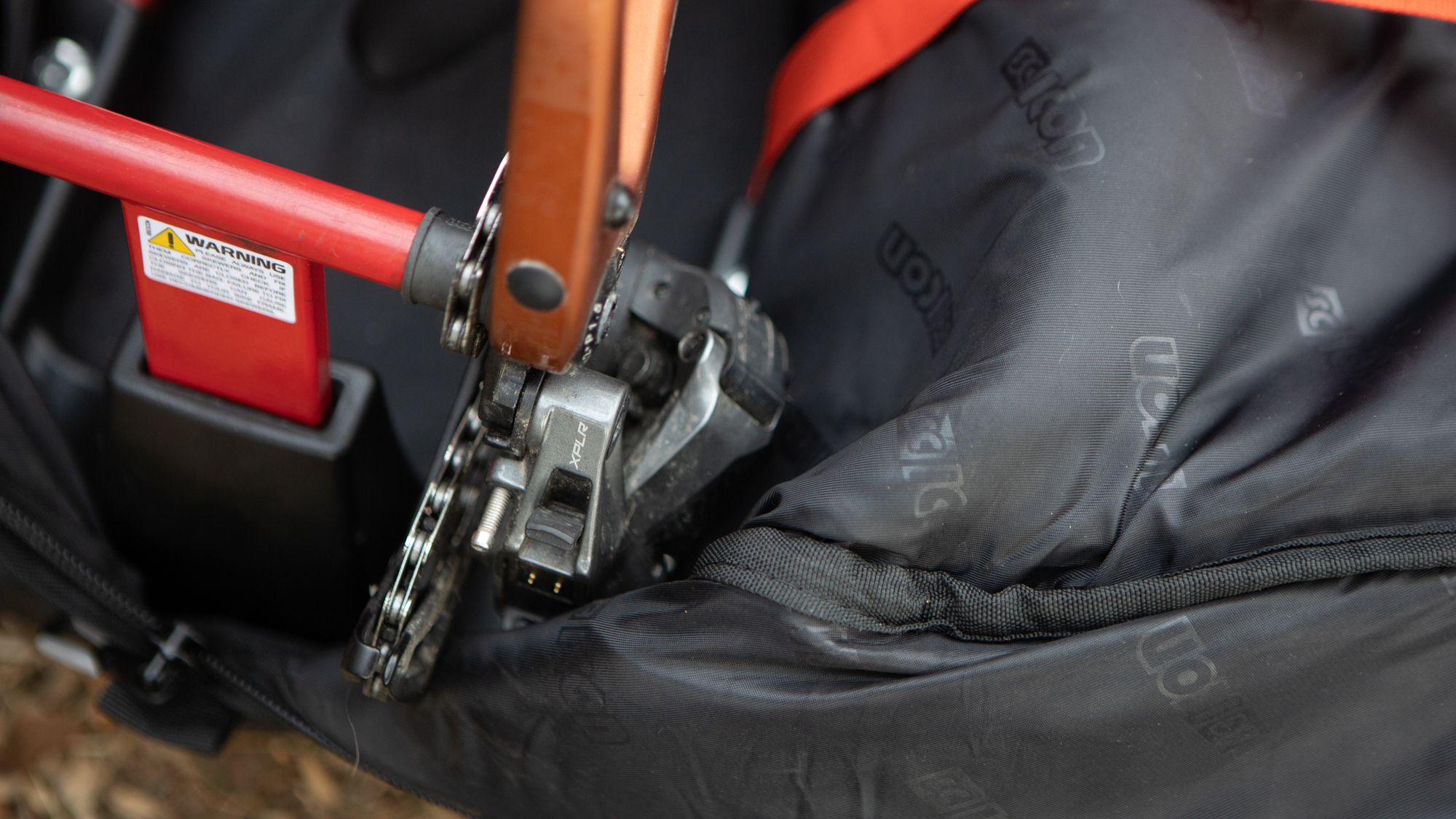

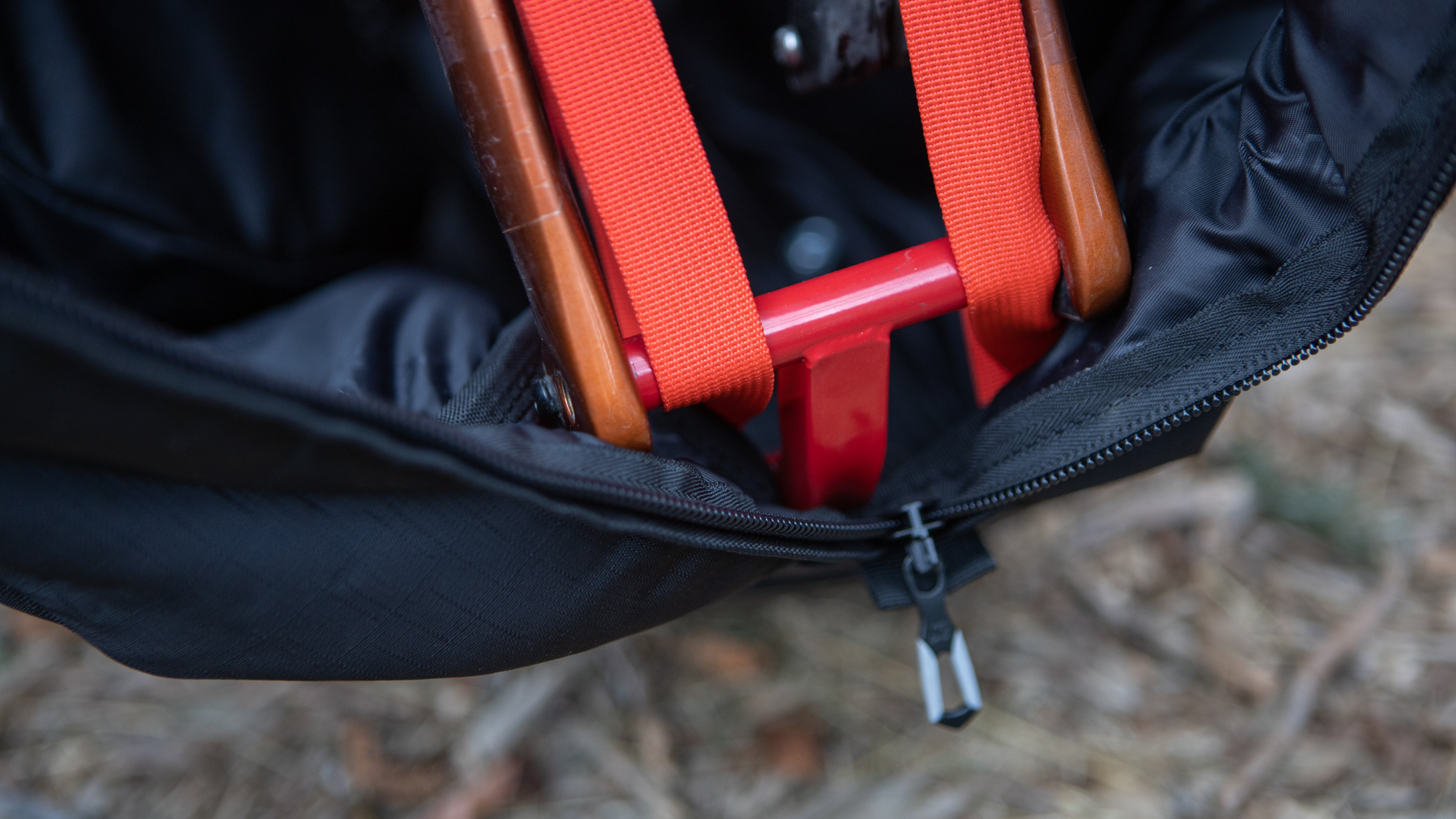
Performance
Packing a bike into the Scicon AeroComfort 3.0 TSA is simple. The whole process takes maybe 15 minutes, perhaps as much as 30 minutes when you are first figuring it out. The hardest part is that the outer fabric shell doesn't open enough at the ends. This means it's tough to get the piece that holds the fork positioned in the receiver hole and to slide it around once you do manage to get it in. At the other end, it's really hard to get the bag around the derailleur. Once you manage those two minor struggles, all you have to do is position the straps and clip them in.
Everything in the upper section of the bag is about holding the bike to the lower frame. At the front, you wrap a pad around each side of the bars on the flats and attach a strap with a buckle over the top. At the rear of the bike, there is a saddle cover with loops for the strap to go through. The last strap goes over the top tube and there is another pad to protect the frame. The only trick with the centre strap is that it also pulls the sides of the case closed, so remember to get the wheels in the wheel bags first.

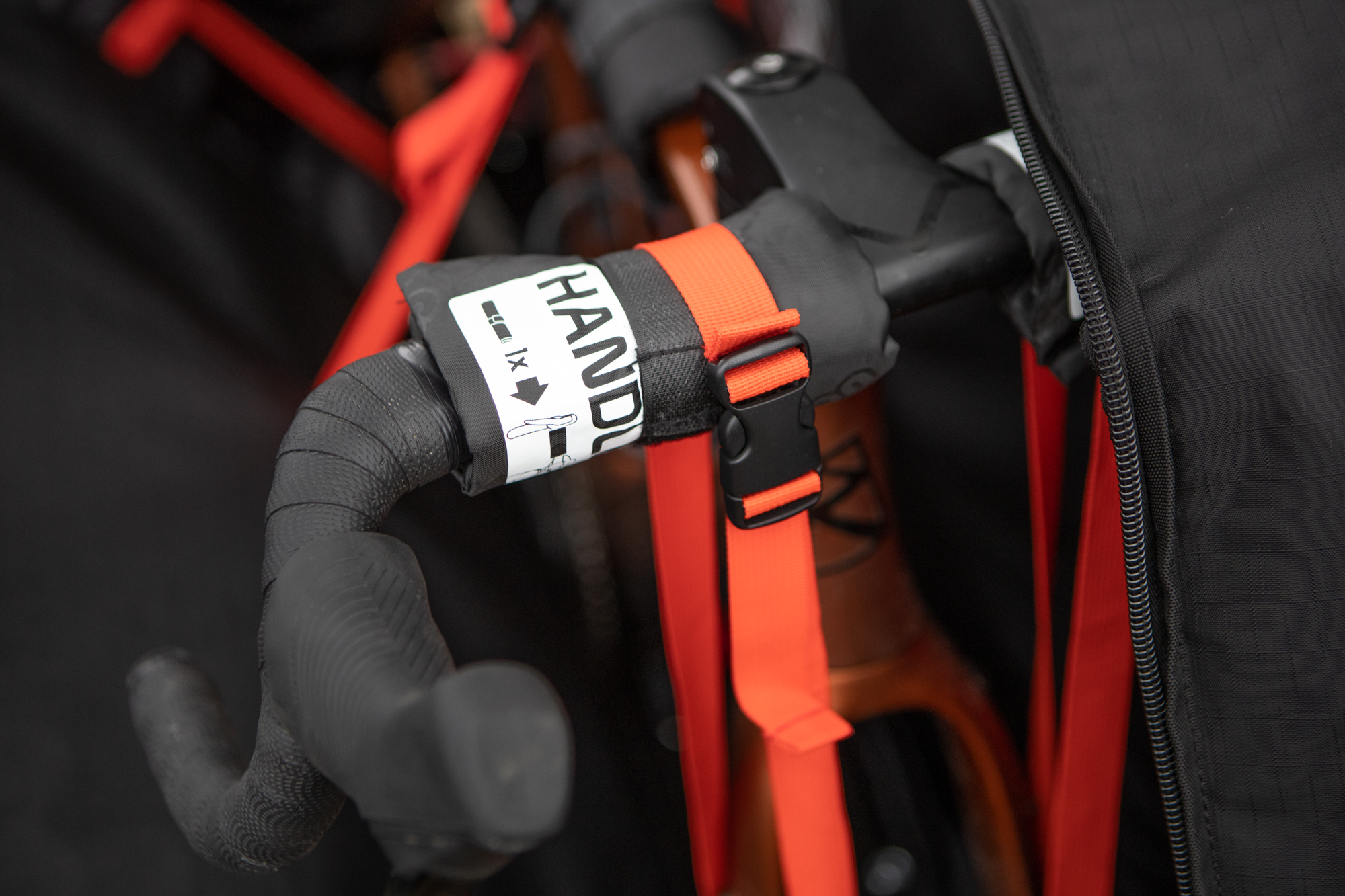
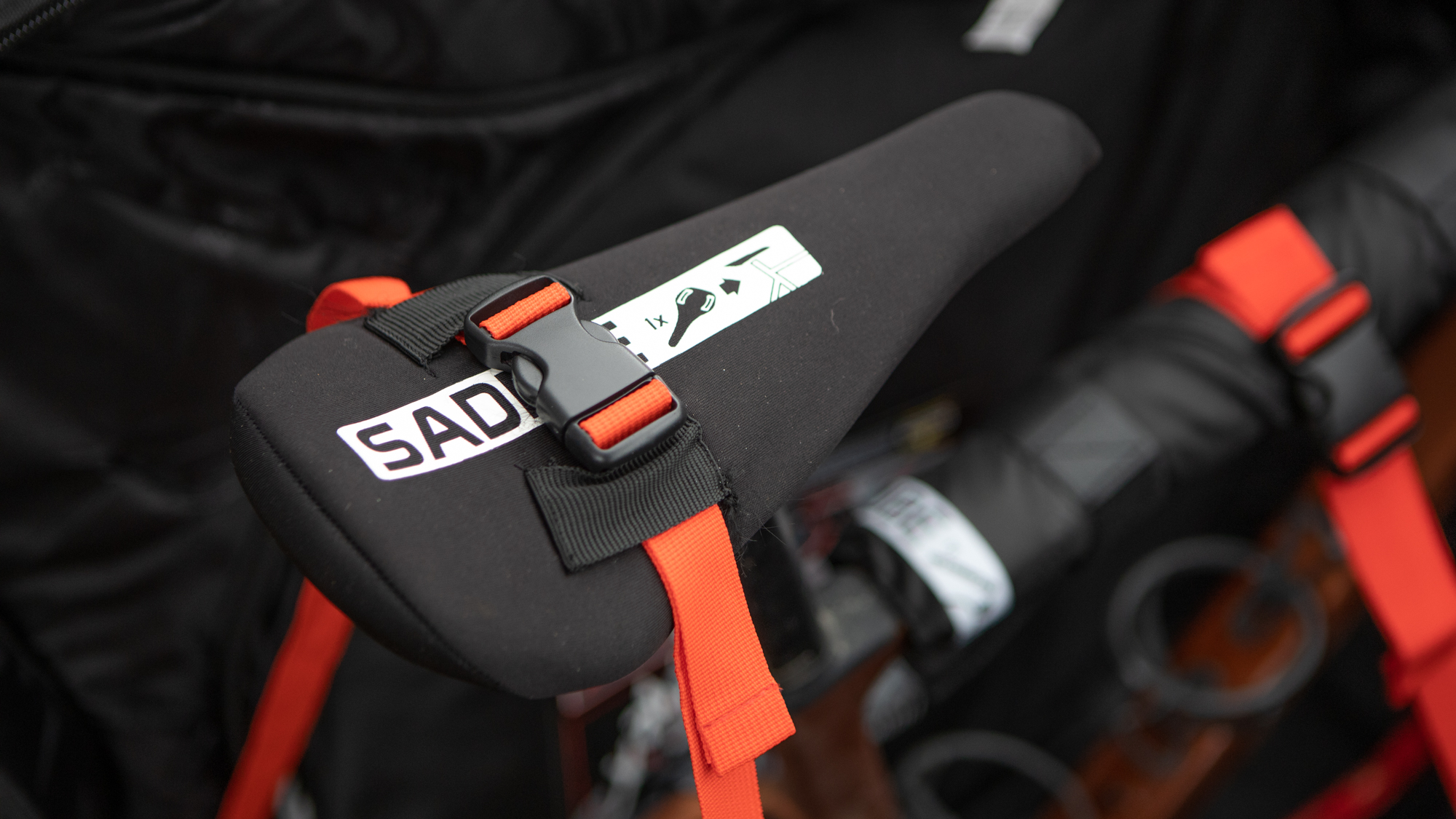
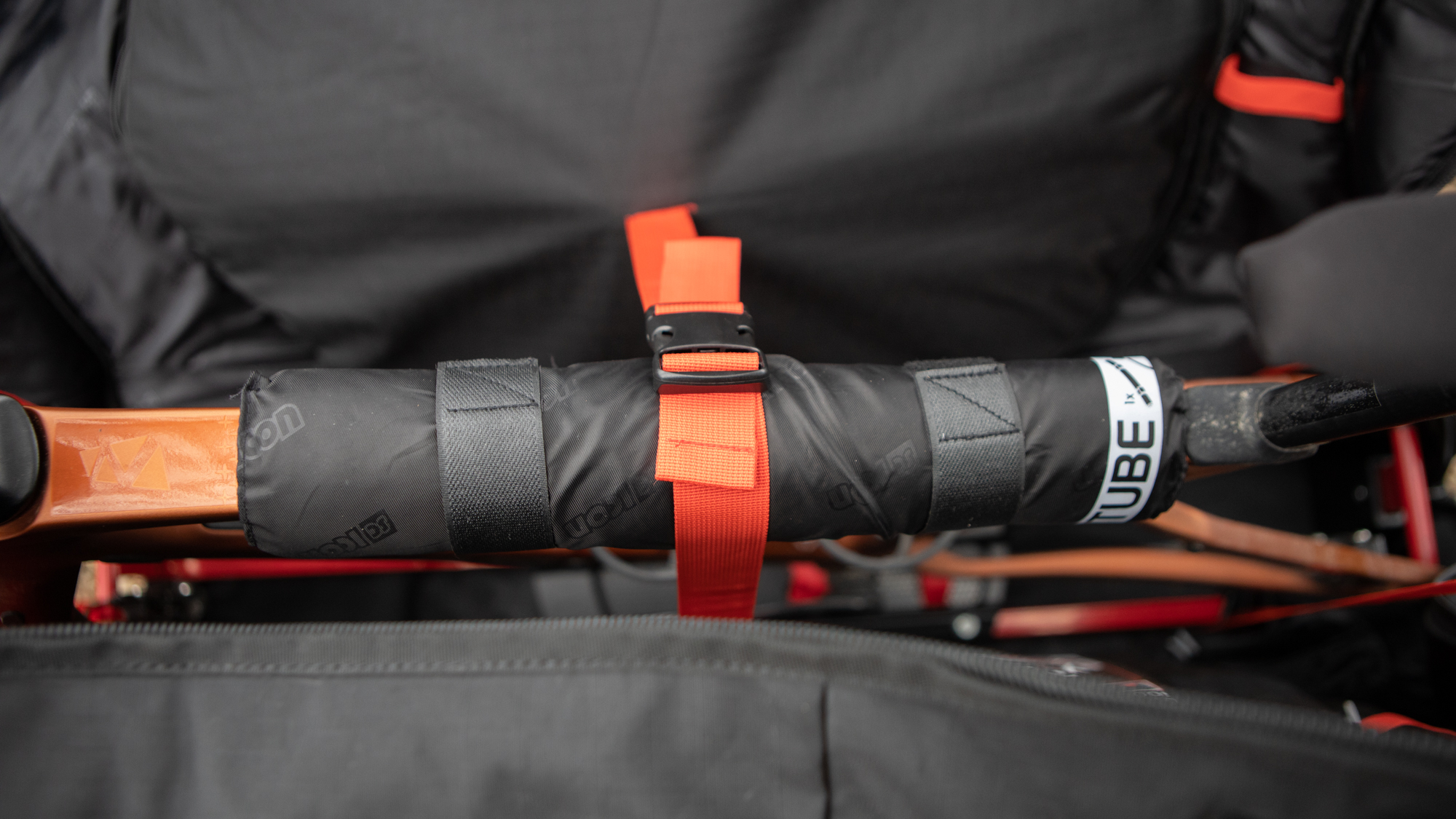

With all the straps in position you just need to zip the bag closed. It's not terribly hard but getting the front positioned around the drops and controls might take a bit of finesse. You might also find yourself repositioning the padding to protect the levers but none of it's tough.
At this point, you are ready to head to the airport, however, I wouldn't head out the door until I removed the derailleur.
If you recall above how I said it was tough to get the case over the derailleur, that's because there's not a lot of spare room in that area. On the outside, there is hard plastic, plus there is padding, so it's unlikely the actual derailleur is going to get damaged. It seems likely the hanger could get bent though, so it's not a risk I would ordinarily take, was I not testing it for a review.
Except, somehow bikes seem to survive in this bag. I personally used it with gravel bars that I think are too wide at the drops and suffered no consequences. I've also loaned the bag out to others who also used it without removing the derailleur and suffered no consequences. What you really want to know is if your bike is going to remain safe despite staying assembled and the answer is yes. I've had positive personal experiences to draw from, but perhaps more tellingly, the last time I flew with a bike there were three other people there with Scicon AeroComfort 3.0 TSA bags and none of us had any issues.
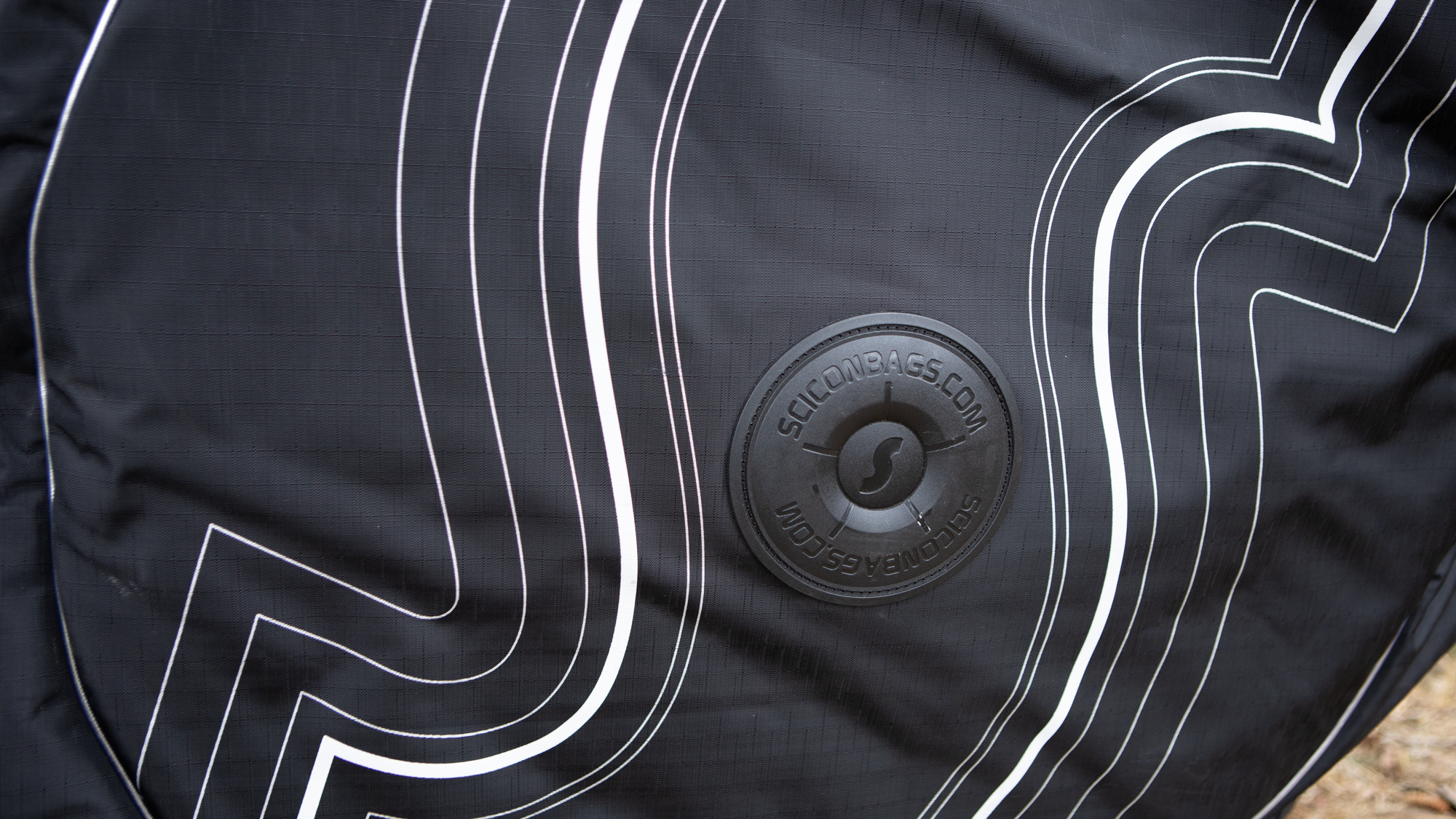
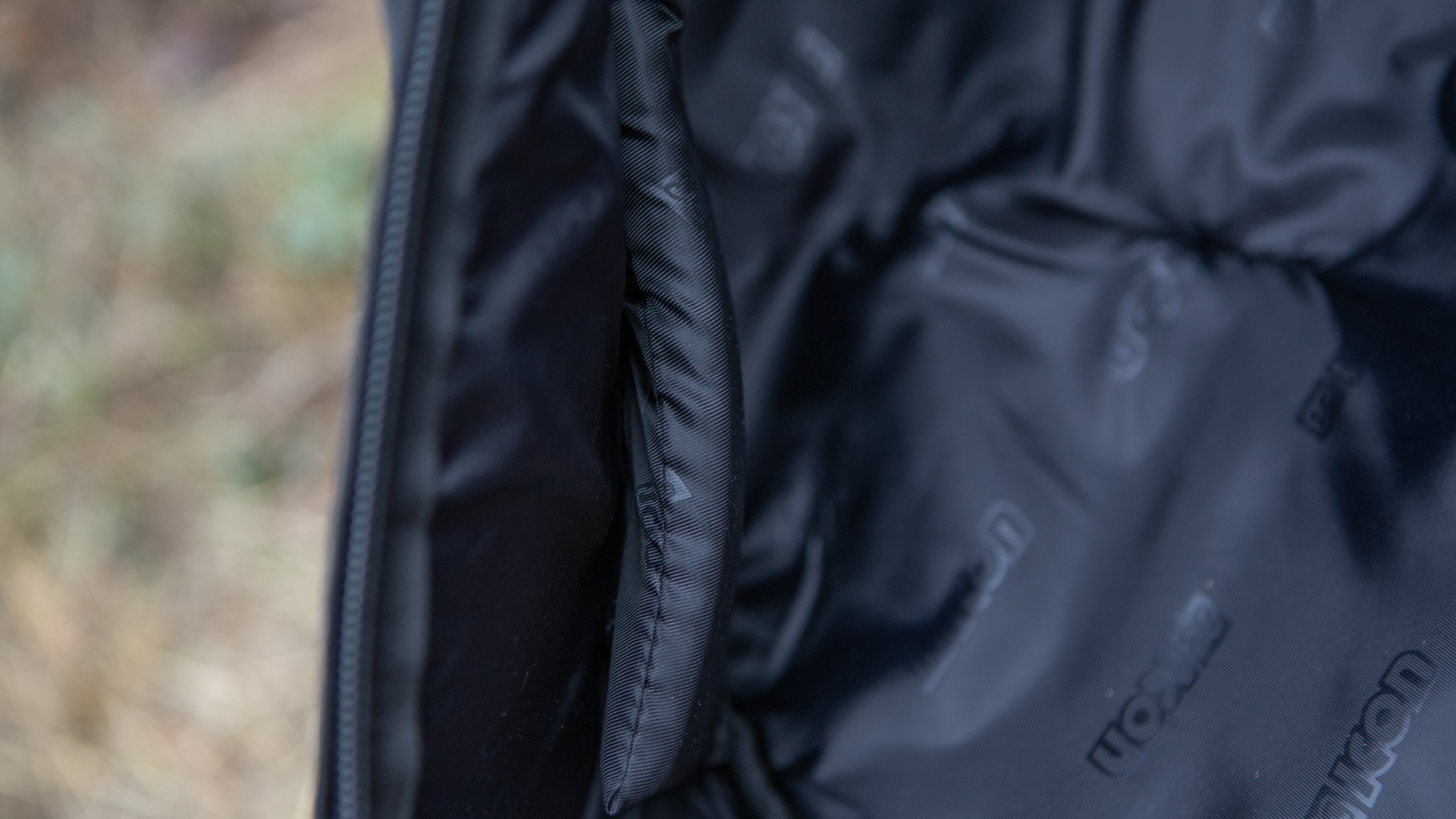
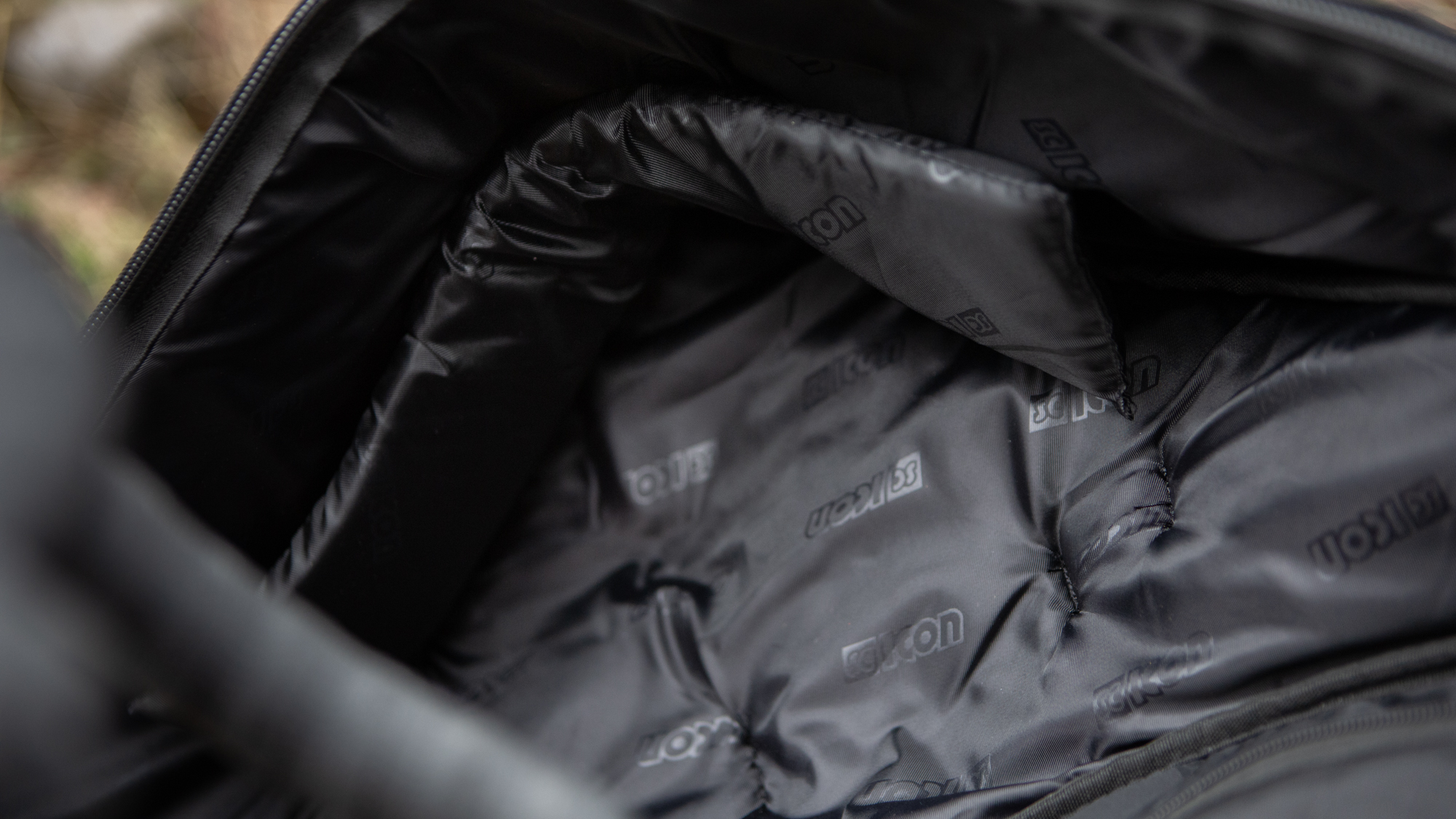


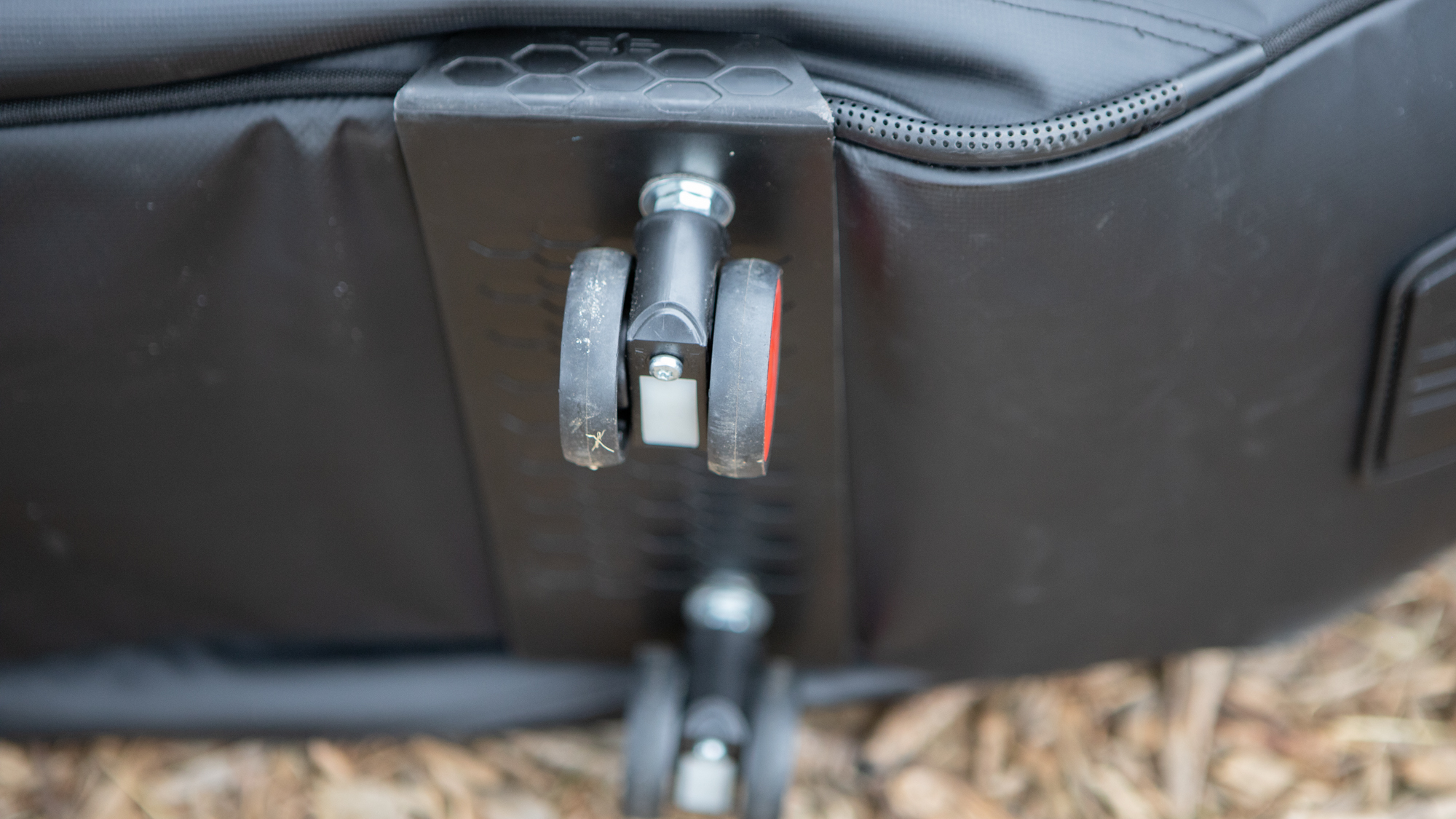

Verdict
The negatives I listed seem to be more theoretical than real life. If I was going to leave the derailleur attached to the bike, I'd want to have the metal cage usable. It's not usable with thru-axles so I prefer to take it off. Others don't though and it seems to work fine.
The story about difficulty with ground transportation is somewhat similar. I have managed to get the Topeak PakGo X into the back of a regular sedan and I doubt that would work with the Scicon. That said, I called for Lyft XL each time I used it and I managed just fine. The strap for your shoulder combined with the low (17.1 kg packed with a gravel bike) weight and excellent wheels actually makes it more flexible in an airport than the Topeak.
There is another aspect to consider as well. The Scicon AeroComfort 3.0 TSA Bike Travel Bag has been out for a long time. During that time on market, the price has dropped quite a bit. These days it's looking like a really good bargain and it usually undercuts its main competitor, the Evoc Road Bike Bag Pro. That bag offers a similar no-tools experience but with a little more protection thanks to its hard upper shell. However it's a much larger bag to store when not in use, and is a little more difficult to manoeuvre than the Scicon.
| Rolling ability | Full mobility and incredibly smooth. It’s also nice that you can shoulder it with ease if needed. | 10/10 |
| Packing Experience | It’s incredibly easy but the zipper not quite opening enough is an annoyance | 9/10 |
| Bike Protection | Although it’s always worked, I don’t love the way the derailleur is handled and the edges of your bars are somewhat exposed as well. | 6/10 |
| Weight | Well under any limits. | 10/10 |
| Value | There are still better values out there but with the pricing where it’s at right now, this is one of the better values available for bike bags. | 8/10 |
| Overall | Row 5 - Cell 1 | 86% |
Tech Specs: Scicon AeroComfort 3.0 TSA Bike Travel Bag
- Price: £447 / $569.40 / €509,40 / AU$779.4
- Compatibility: QR skewer or 12 mm x 100 mm thru axle (Road bike disc)
- Rear: QR skewer or 12mm thru axles
- Size: 42.9 x 40.5 x 19.6in
- Material: SciCon D-Tex860 fabric
- Weight: 17.6 lb (8kg) claimed weight (measured at 17.1kg with packed bike)
Josh hails from the Pacific Northwest of the United States but would prefer riding through the desert than the rain. He will happily talk for hours about the minutiae of cycling tech but also has an understanding that most people just want things to work. He is a road cyclist at heart and doesn't care much if those roads are paved, dirt, or digital. Although he rarely races, if you ask him to ride from sunrise to sunset the answer will be yes. Height: 5'9" Weight: 140 lb. Rides: Salsa Warbird, Cannondale CAAD9, Enve Melee, Look 795 Blade RS, Priority Continuum Onyx
